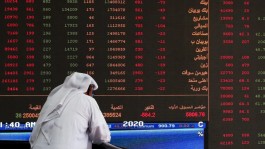Oil prices suffered losses for the third week in a row for the first time since last May, despite the rise of both crude oil by about two percent in the settlement of contracts on Friday, with Iraq confirming its commitment to the production levels set by the OPEC+ alliance, before a meeting that the alliance will hold in two weeks.
Weekly performance
Brent crude futures rose $1.42, or 1.8 percent, to record $81.43 per barrel at Friday’s settlement. US West Texas Intermediate crude rose $1.43, or 1.9 percent, to $77.17 upon settlement.
But prices recorded a weekly decline of four percent, recording the third consecutive weekly loss for the first time since May.
US West Texas Intermediate crude has fallen by about 12.4 percent in the past three weeks, including a 4.15 percent drop this week, due to signs of declining consumption in China, the United States and Europe.
Brent crude also suffered losses of about 10.5 percent in the past three weeks, including a 4.1 percent decline this week.
Since the beginning of this year, Nymex crude contracts have erased all their gains to enter the red zone, while Brent crude oil recorded slight gains of about 0.3 percent.
Analysts at Commerzbank said concerns about demand have replaced fear of production disruptions due to the conflict in the Middle East.
Weak Chinese economic data this week added to concerns about faltering demand. Moreover, refineries in China, the largest buyer of crude oil, ordered smaller supplies from Saudi Arabia, the world's largest oil exporter, for December.
The OPEC+ alliance, which includes the Organization of the Petroleum Exporting Countries (OPEC) and allies including Russia, will meet on November 26.
The Iraqi Oil Ministry said that Baghdad is committed to the OPEC+ agreement regarding setting production levels.
Helima Croft, an analyst at RBC Capital Markets, said that the possibilities of Saudi Arabia extending its production cut into the first quarter of 2024 are certainly increasing given the markets’ renewed concerns about Chinese demand and the broader macroeconomic outlook, according to Reuters.
Baker Hughes data showed that the number of oil exploration rigs in the United States decreased by two rigs to 494 rigs this week, which is the lowest level since the week ending January 21, 2022.
Moody's revised its outlook for the United States of America to negative from stable, noting the large fiscal deficit and low debt sustainability.
The agency also expected a slowdown in global economic growth next year, with the impact of high interest rates transmitted through credit channels to the real economy, which will reduce inflationary pressures amid a slowdown in demand as central banks maintain a tight policy.




































